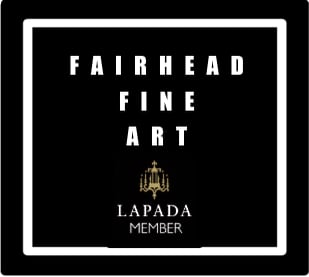Fauvist painter Maurice de Vlaminck was born to a French mother and Flemish father in 1876 in Paris. He was enraptured with color from a young age and although he enrolled in some drawing classes, he was largely self-taught and proudly rejected the system of the academy. His artistic career launched at the age of 23, after a chance encounter with the painter André Derain who became his lifelong friend.
Vlaminck cultivated a Fauvist style of short, choppy brushstrokes, which emphasized coloristic dynamism and his exploration of the expressive nature of color set him in line with other Fauvists including Derain, Henri Matisse and Raoul Dufy. Vincent van Gogh’s application of paint, expressive use of color, and his psychological exploration of his sitters were indelibly influential to Vlaminck. He experimented with technique, applying unmixed paint in daubs directly from the tube onto the canvas, and venturing outside of the conventions of realistic representation in favor of the liberation of color, a step in modern art development toward abstraction. As Fauvism’s popularity began to wan, Vlaminck blamed Picasso and the rise of Cubism for overtaking modernism with overwrought, unnecessary confusion.
Vlaminck pursued other careers before becoming a painter, largely to maintain other sources of income. When the major art dealer of the period Ambroise Vollard purchased Vlaminck’s entire stock of paintings in 1906, the artist was finally able to devote himself entirely to painting. His works are included in the permanent collections of major museums and galleries around the world including the Museum of Modern Art, New York; the Art Institute of Chicago; and the Hermitage Museum, St. Petersburg. As a major modernist master, his works sell for tens of millions of dollars; his Paysage de Banlieu sold for $22.5 million.
